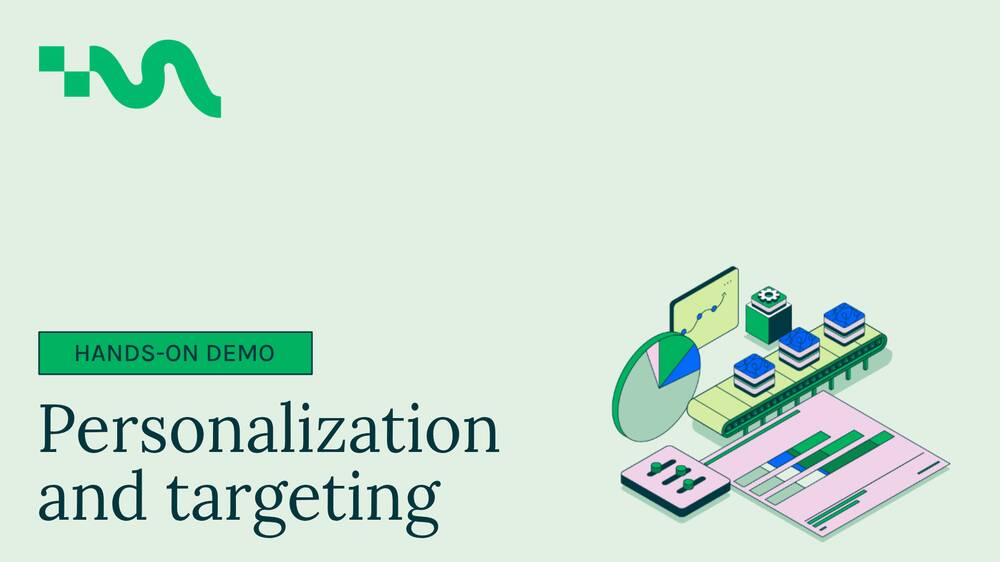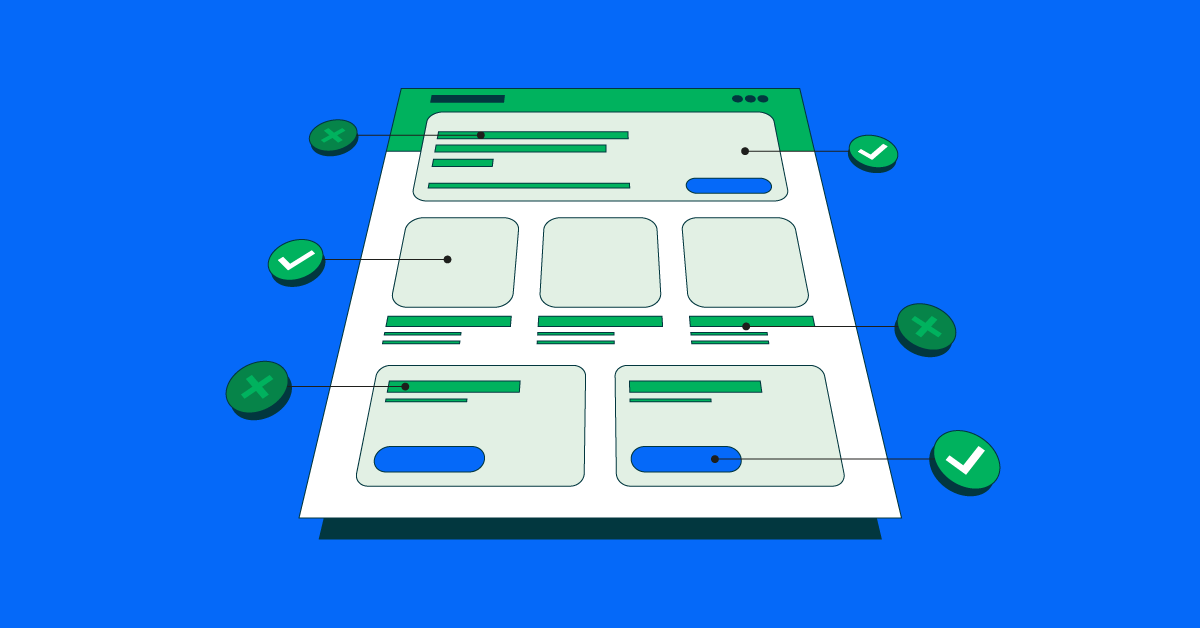- Jun 25, 2024
- 8 min
Personalization: Explicit and implicit, some do’s and don’ts
Magnolia in action
Take 12 minutes and a coffee break to discover how Magnolia can elevate your digital experience.
Implicit Personalization versus Explicit Personalization. While implicit personalization operates in the background, analyzing user behavior, data analytics, and touchpoints to collect on overall user behavior, explicit personalization is based on data provided to you by the visitor and is usually a more efficient data collection method because it can be focused on specific needs.
What should brands avoid in their process of offering personalized customer experiences? Making assumptions based on a single interaction or relying on generic personalization are just a few examples. Learn more about practices that could misfire in this article.
With Magnolia, you can personalize the customer’s journey based on both explicit and implicit data. Its out-of-the-box personalization features aid editors in their pursuit of offering tailored content and experiences.
Would you still show the exact same website to every visitor? The digital age has led the push to personalized content and experiences. In the last couple of years, brands have turned their focus and increased spending towards personalization. According to Deloitte Digital’s report, the number of businesses “incorporating personalization as a core experience strategy has risen 50% since 2022, and brands expect to increase their annual personalization budgets by 29% this year compared to the previous year.”
At its simplest, personalization is about creating and delivering digital experiences that are customized based on some information. One example is geolocation. Location-based personalization helps businesses target customers based on their specific surroundings, making the delivered content relevant and specifically tailored to their needs. And considering that “49% of customers will likely become repeat buyers after a personalized shopping experience with a retail brand,” businesses should not only acknowledge the benefits of personalization but excel at it.
Let’s look at a clear example of personalization based on geolocation: an online sports apparel store might show hiking or skiing gear to website visitors from the northern hemisphere in the winter season and swimming and snorkeling accessories to those from tropical regions.
It is clear that consumers are increasingly choosing brands that not only offer personalized content but demonstrate they know their consumers on a personal level. In other words, they remain loyal over time, and this has a positive impact on conversion rates. McKinsey indicates that companies excelling in personalization generate 40% more in revenue than those that do not utilize it.
With so many web personalization examples available, the benefits of personalization are clear, as this graphic sums up.
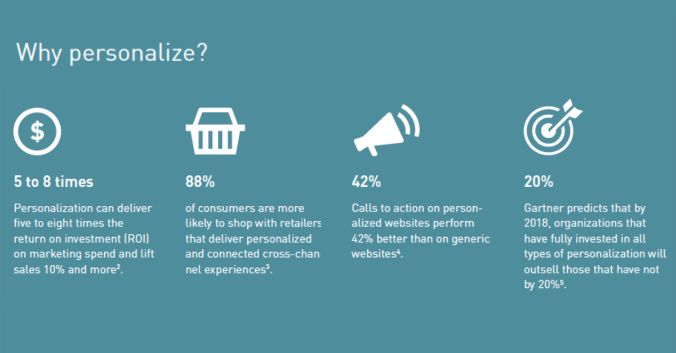
More relevant content for visitors means more conversions and better business for you.
To get there, you need: 1) data, 2) segmentation, 3) personalized content. Personalization can be explicit or implicit.
Explicit personalization is based on information that users give you. Examples include:
Visitors log in at your website, create user profiles that are linked to your CRM, and receive emails;
Users indicate their interests and content preferences and subscribe to specific channels;
Personalization data that you mine through social media and social logins;
Loyalty program signups include those for supermarket chains and in the travel sector (airlines, hotels, car rentals).
Implicit personalization is based on information that you figure out from users’ behavior and context. Examples include:
Tracking anonymous visitors based on geolocation and time such as suggesting flight deals based on IP addresses;
Showing new vs. returning visitors different variations of content;
Targeting promotions to visitors based on their browsing history or shopping cart;
Assembling dynamic landing pages for visitors who land on your website from a particular campaign.
For example, Magnolia is a content management and digital experience platform (DXP) that lets you personalize your customers' journeys based on both explicit and implicit data through traits. Traits are detectable attributes of website visitors, such as demographic information, browsing location, or language settings.
By default, Magnolia will track the date, country, whether the visitor is new or logged in, and browser cookies that contain user behavior. These traits can be further refined by explicit data the user provides and implicit data that Magnolia tracks as the user navigates the site.
When it comes to explicit data, Magnolia integrates with customer data platform (CDP) technology such as Segment (formerly Twilio). Segment allows you to track and collect data about your customers (thought events) and send that data to Magnolia (as personalization traits).
Editors can use Magnolia’s out-of-the-box personalization features to serve tailored content and experiences based on Segment’s insights.
Let’s say you are a retail business interested in increasing conversions (aka product sales). You define two types of events (visit category, visit product), events that will be used to serve personalized content to users visiting a certain category or product. Once a user performs a targeted visit, a tracking event is sent to Segment, and Magnolia will fetch the gathered data from Segment to serve the relevant content for that audience.
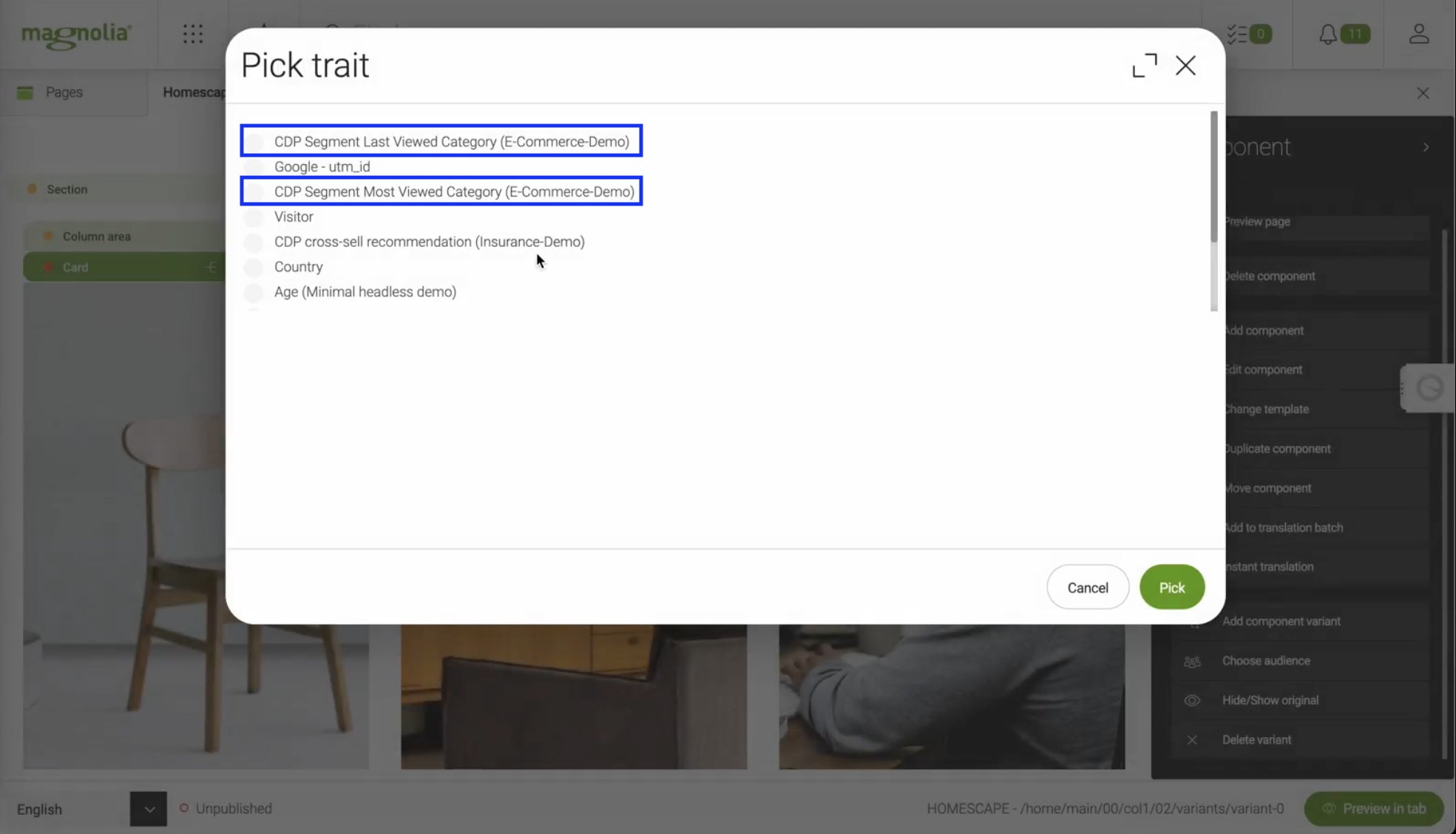
Personalized experiences created with Magnolia can be further enriched with implicit data. For example, with Magnolia's Content Recommender extension you can personalize the experience based on the user journey in real time.
The module allows for assigning scores based on page visits or how the user interacts with your content, such as clicking links or playing media. The scoring is used to identify interest in certain products, product groups, services, or topics, which in turn helps to display personalized experiences that match each user's interest and behavior, taking them further on the user journey.
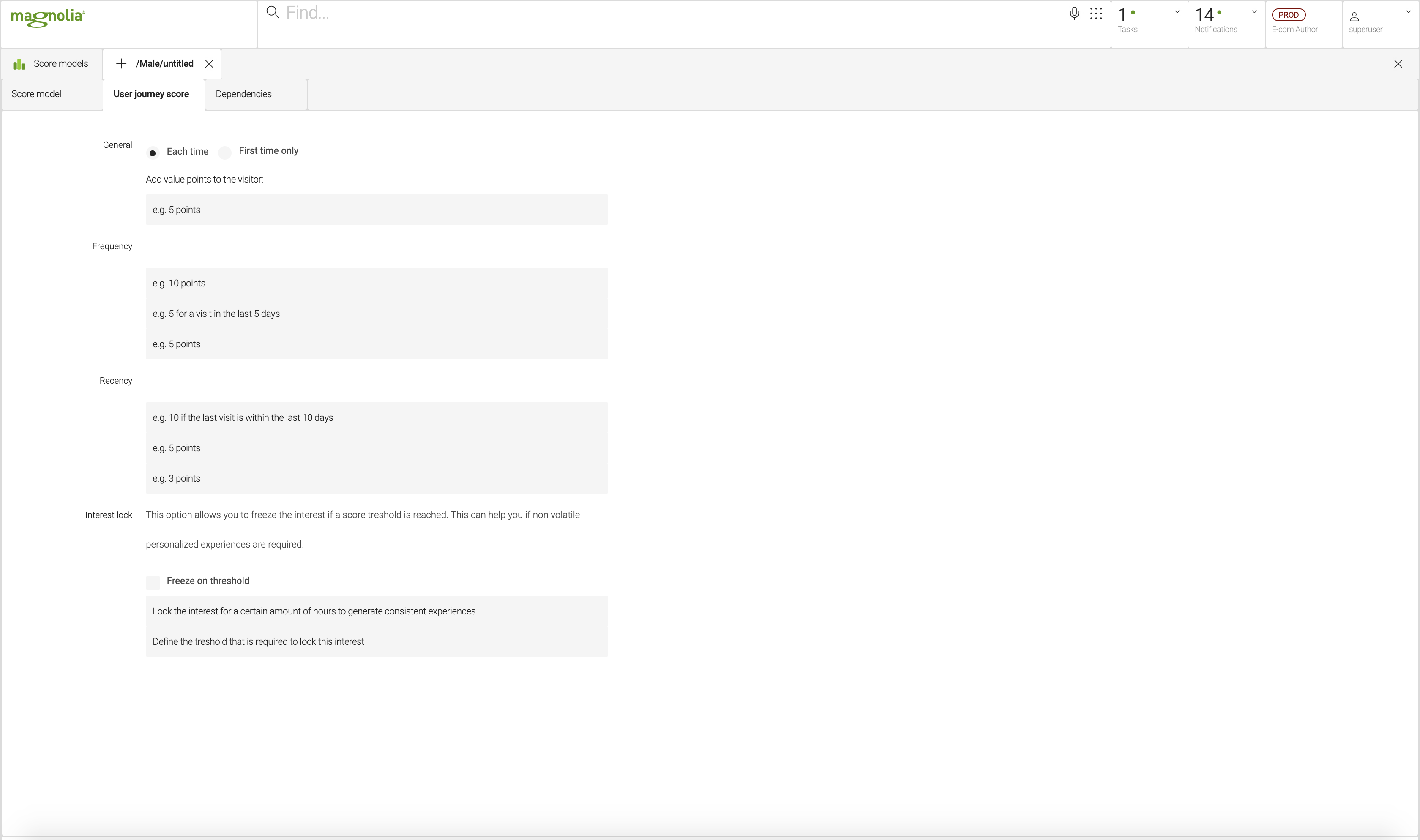
The state of personalization is mixed
Some are very advanced. For instance, a retailer uses an AI rule engine that picks content items for each visitor segment from a content pool. Most are getting started. A supermarket chain that has collected a wealth of customer loyalty data from its brick-and-mortar stores is just starting to deal with linking this data to its digital presence.
74% of global brands said they’ve identified meaningful data sources for their personalization efforts, and 91% keep an eye out for major learnings from test results to apply in the future, as research by personalization engine Dynamic Yield shows.

Is there “bad personalization” or tactics that misfire? Some pitfalls to avoid:
1. Don’t make assumptions based on a single interaction. For example, if a female customer looks for cycling equipment as a gift for a friend; the online store assumes she’s a cyclist and bombards her with ads for cycling events and equipment.
2. Don’t send too many messages. If you’ve booked a flight, periodic emails about hotels and rental cars might be a nice touch, but certainly not daily emails counting down the start of your holiday.
3. Don’t rely on out-of-date information. A payment system that stores credit card details should be set to ask the customer for updates when a card expires, not simply auto-fill with outdated information.
4. Don’t get customer details wrong. It’s such a let-down when you get your customer’s address wrong, or worse, misspell their name. Personalization means paying attention to the fine details and getting them right in the first place.
Blueprints for Deep Personalization
Learn the key steps towards building personalized customer experience.
Here are some tips for personalization, for whatever stage you are at:
1. Just start. Start simple.
2. Split your audience into the most important segments.
3. Tag content to match those segments.
Ticino.ch, a tourism portal for the Italian-speaking region of Switzerland, introduced a homepage that is personalized with different content depending on the user’s current geographical location and language selection. By identifying personas and dividing tourists into three segments (residents, day-tourists and medium-to-long-term distance tourists), ticiono.ch was able to give different visitors relevant information and tailored digital experiences.
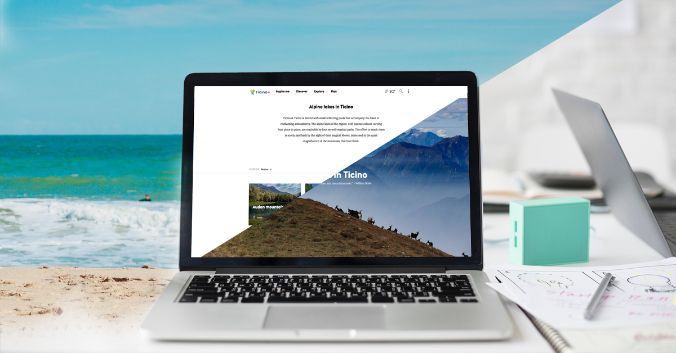
4. Experiment and iterate as you gain more insights.
5. Map out your customer journeys. Identify the touchpoints that matter and optimize those.
In the airline business, the customer journey stretches across several touch and drop-off points: After booking a flight, travelers usually select their seat and meal, then they can be prompted to look for a hotel or a rental car before proceeding to payment. JetBlue designed to trigger emails around these customer touchpoints based on two factors: the customer’s destination city and loyalty program status. It found that compared with standard promotional emails, these trigger emails led to higher open rates and conversions, which generated more revenue.
6. When you have identified the touchpoints, focus also on optimizing the entire customer journey, making it faster, smoother, more engaging.
Sungevity, a residential solar panel provider, was able to provide seamless, personalized digital customer journeys by managing data about the solar potential of individual homes and coordinating the end-to-end process of sales, custom installation and service. It customized and automated each step of the customer journey, making it so simple and compelling that customers moved from one step to the next and stayed within the “loyalty loop”. Sungevity saw sales double, exceeded its growth targets and became one of the fastest-growing players in the residential solar business.
7. With customer journeys becoming increasingly fragmented, try to capitalize on micro-moments:
- When customers are in a “I-want-to-know” moment, they will be more responsive to content that provides an answer or solution rather than sales messages. According to Google, 87% of consumers do research before visiting a physical store.
- When customers are in a “I-want-to-go” moment, they will be more responsive to search results, maps and directions on where something is located, rather than product information.
- When customers are in a “I-want-to-do” moment, they are looking for ideas, tips or pointers to complete a task. Serve them with recipes, step-by-step guides and how-to videos or tutorials.
- When customers are in a “I-want-to-buy” moment, they are looking for the best deals and how to get them. Offer them coupons, special promotions, a shopping app or one-click ordering feature.
When it comes to personalizing content and digital experiences, many companies, despite the importance of personalization being widely acknowledged, think that they are lagging. But you can make a difference even with basic, simple personalization. Just get started. Analyze the results and improve. Then, gradually think about upping your personalization game.
If you're convinced by now that you'd like to up your personalization game, look at this in-depth demo of Magnolia's personalization capabilities. It can take your business to the next level.
